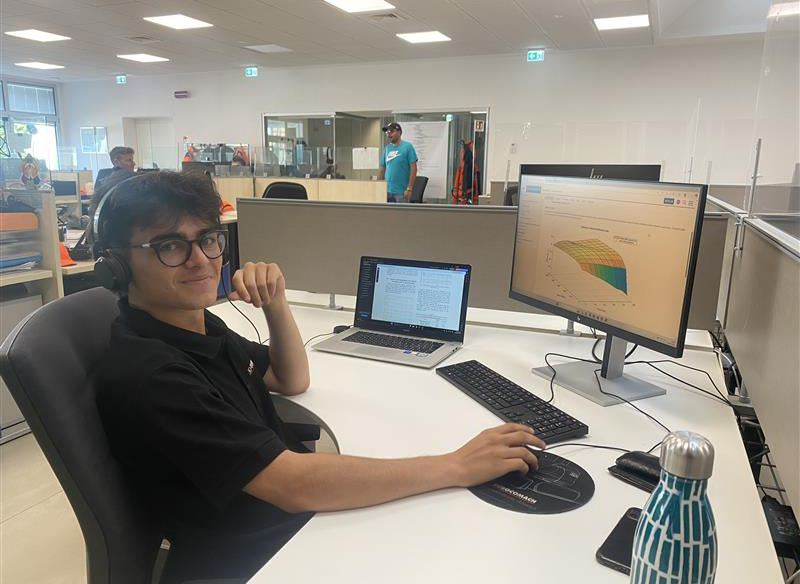Today, for our Students on Board series, we are sharing an interview with Fabio Sandonini, an electronic engineering intern currently working in the Eurocomach product department. Fabio’s story seems to follow a common thread, originating in the Mantua area, where he comes from, and where he began hearing about and seeing his very first earth-moving machines from a young age.
You started your internship in April, if I’m not mistaken, and you are in the product department. Regarding your studies, you are an electronic engineering student. How was your first month at Sampierana?
The first month went well. For me, it was also my first work experience in my field of study, which is electronic engineering, and in this setting, I had the chance to understand how a technical office works and how to manage relationships with colleagues. I found a very welcoming environment, both with department heads and with other people in the team, and I was finally able to get hands-on with the subjects I had actually studied. So, I would say it was a bit like living what I had always wanted to try and experience
So, regarding your studies, what did you learn at university that you were actually able to apply here at the company?
Definitely the method used to approach a problem, because at university we studied many subjects and a lot of information that don’t always directly relate to what I’m doing in my internship. However, all the concepts share an important factor: the search for the right “method,” understood as problem-solving, identifying the data, reading it accurately, and following it up with adequate analysis. In this respect, I recognize that my studies have supported me. For the rest, a good part of the project I am working on covers what I studied at university, specifically engine technology, electrical systems, and control systems for electric motors.

Which projects did you start working on? / Which projects are you currently working on?
I started working on a project that involves creating a digital model of a vehicle currently being designed in the technical office: an electric vehicle.
My project would be to create this model and simulate it in such a way as to be able to make estimates of the battery’s energy efficiency and power output. So, essentially, taking the vehicle, creating a digital copy, and adjusting the parameters differently to see if higher efficiencies can be achieved.
Did you imagine that you would be able to deepen your studies by applying them to the field of excavators?
Yes and no, I think that’s the correct answer. I got to know Sampierana last year during a meeting with local companies at the Cesena campus. It immediately impressed me as a company because, while I am currently studying in Cesena, I am not from here. I come from a small village between Mantua and Brescia, which is essentially a rural area. My uncles are all farmers, and so are my friends. So the agricultural context is one that I have always lived in and that has always fascinated me, both with earth-moving machinery and agricultural machinery.
When I rediscovered this context at the University, I was immediately struck, and the moment I went to the company—where I actually saw everything up close, including the manufacturing of the machines—I was happy to unite two components: the personal/emotional one and the academic one.
What are you enjoying most about the work you are doing?
Well, there are two aspects to mention: on a practical level, the creation of the model itself, and the fact that once the model is realized, I can play around with certain parameters and see how the machine responds. That’s something I enjoy and that allows me to think about how to improve the machine. On the other hand, the opportunity to work on an electric vehicle, considering the current state of things and the direction the world is heading, makes me proud because it allows me to take part in a large, innovative project that has value for the entire community.



